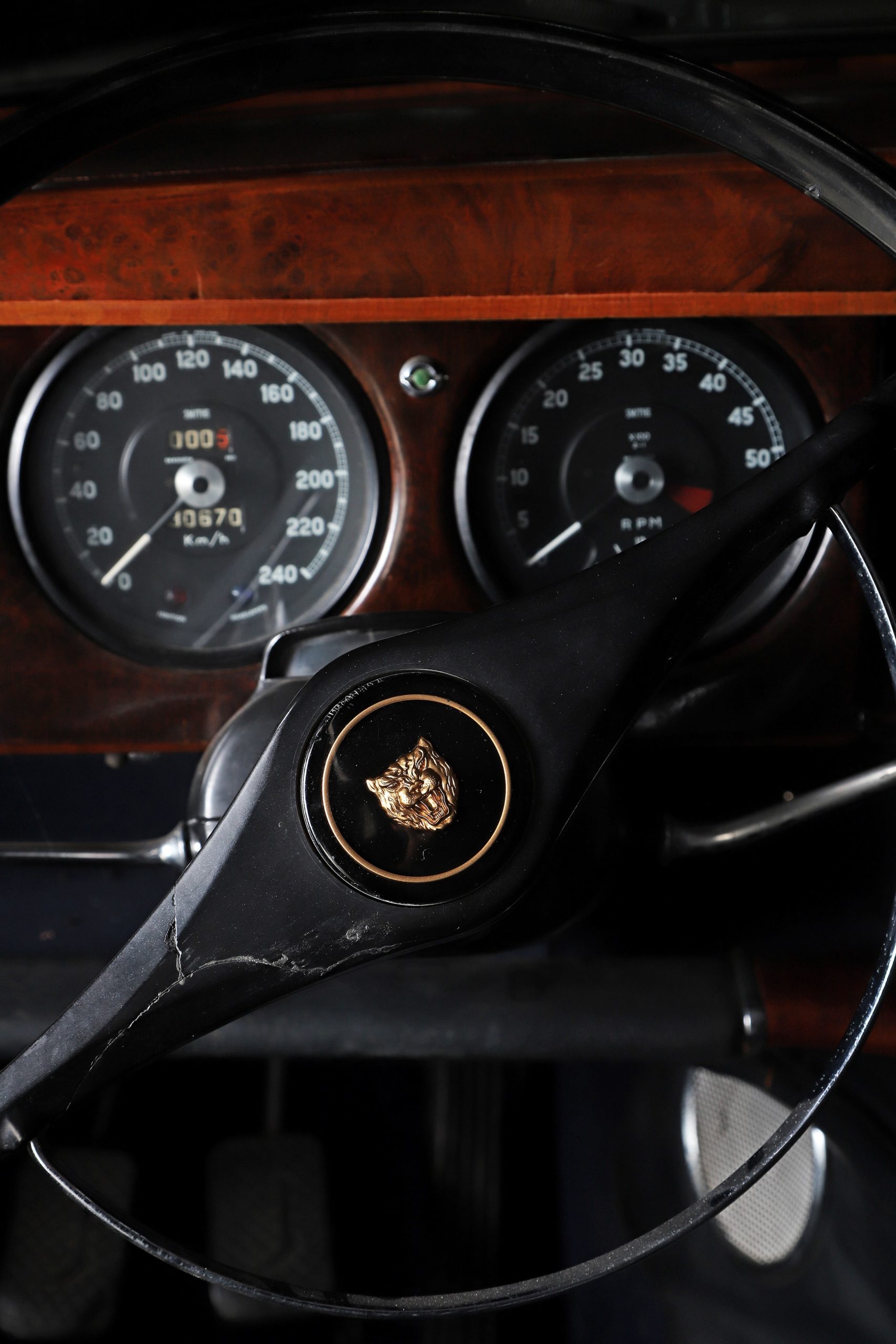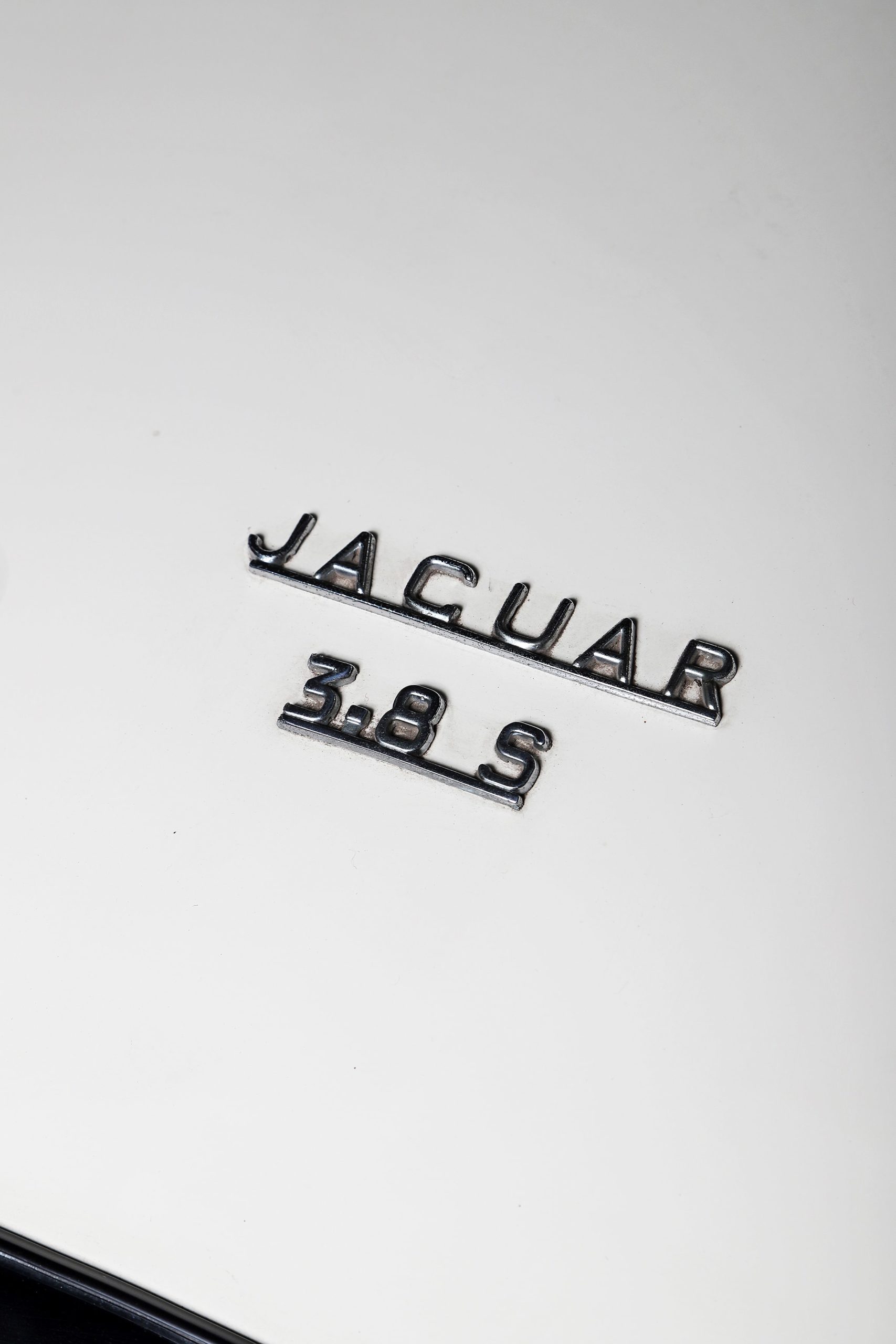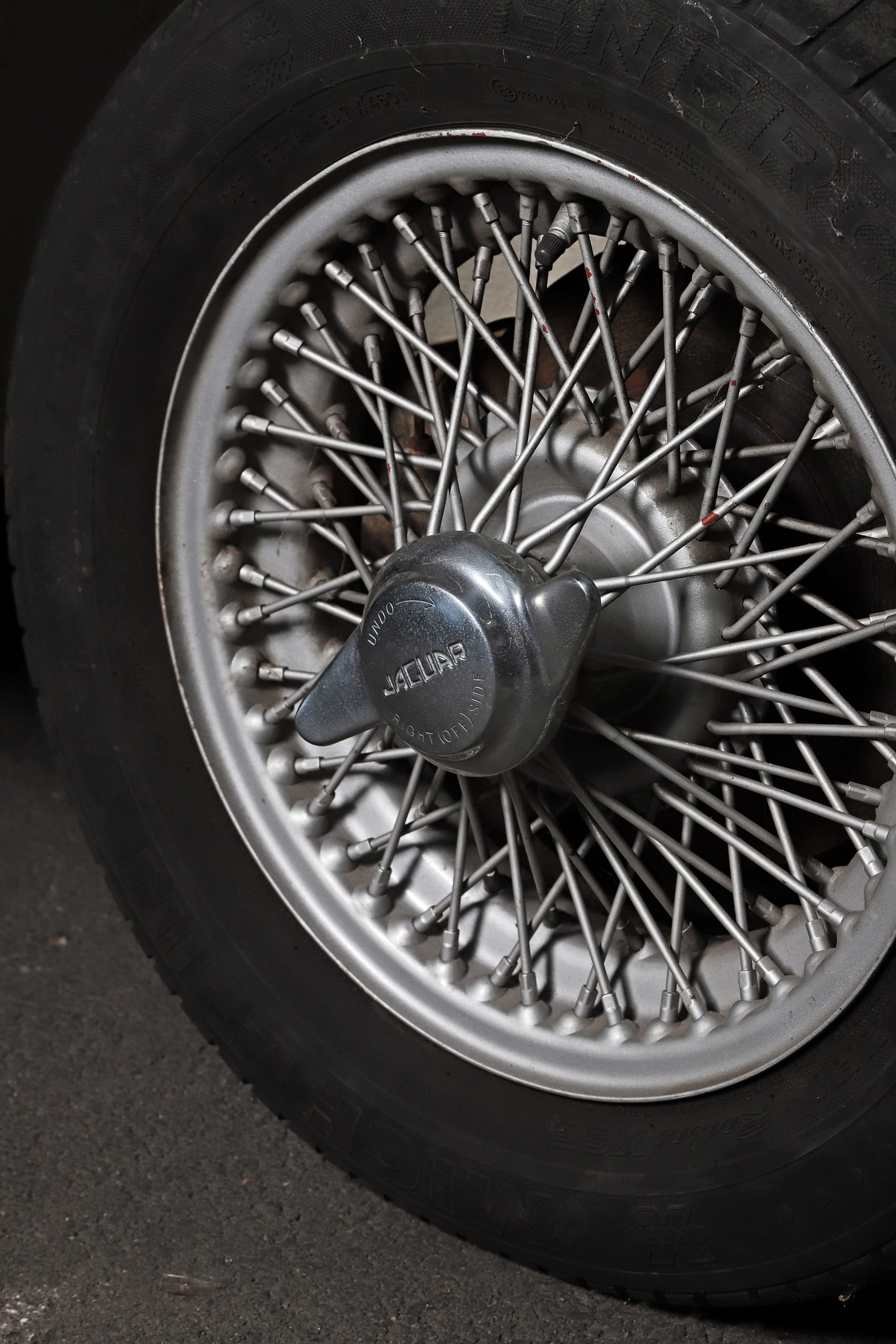Jaguar S-Type 3.8 - 1965
— The super Jaguar MK II —- Model A car introduced after the famous MK II saloon and often seen as a super MK II, more modern and comfortable with its MK10 inspired interior.
- Positioning A modern car in its time, intended by Sir William Lyons to be positioned between the then quite old MK II and the very long MK10.
- Technology A saloon powered by the superb XK 3.8l engine and featuring independent rear wheels.
- Comfort A more luxurious and sophisticated car than the Mark II, whose interior is directly inspired by the MK 10.
- Condition A fully restored car in the 90’s, which now needs to be mechanically restored.
Often referred to as a super MK II because of its common engine block, the remarkable XK engine, and the similarity of its front end, the S-Type saloon is actually quite different. Featuring independent rear wheels, an interior and rear styling inspired by the larger MK 10, the S-Type is technically more advanced and safer than the MK II. Despite the S-Type’s commercial success in its day, the MK II remains for many the epitome of British chic.
A sedan with a remarkable engine, the XK
The S-Type saloon launched in October 1963 was in some ways a super Jaguar Mark II, the successful sports saloon launched by Jaguar at the London Motor Show in October 1959, which was available in 2.4l, 3.4l and 3.8l versions, and also had a Daimler-branded variant.
So, mechanically, there is no difference between the XK block fitted to the Jaguar Mark II and the S-Type, they share the same lower engine, cylinder head and carburettor. The S-Type was sold new with two versions of the famous XK engine, the first being the 3.4 litre version, the second, the famous 3.8 litre engine also seen on the remarkable E-Type launched in 1961.
Designed during the war in 1943, the XK engine launched in 1948 to power the famous XK120 roadster is a remarkable engine, with great endurance, performance and torque. It was as successful in competition as it was on production models, and equipped all the most iconic Jaguar cars from the end of the 1940s until 1986 when the XJS coupé was the last of line to be powered by the XK. Of course, the engine saw numerous changes, going from 3.4 litres to 3.8 litres and then to 4.2 litres.
A record of longevity for an engine that led Jaguar to five Le Mans victories, notably with the formidable D-Types!
©Aguttes
A super Jaguar Mark II
The front-end of the S-Type is very similar to the one of the MK II, in contrast to the much slimmer rear, which was directly inspired by the trunk line of another Jaguar saloon, the Mark X. This design feature, credited to Sir William Lyons, author of Jaguar’s most successful Jaguar cars, was necessary to incorporate the independent rear wheels.
To the discerning eye, the front of the S differs from the MK II in a few key points; in particular, the absence of fender-mounted nightlights, eyebrow-shaped headlights and foglights, sheet metal visors, indicator lights extending over the lower fenders, a thicker grille surround and thinner bumpers.
As for the interior, it is very similar to that of the Mark X, but with narrower front seats offering better support.
In fact, the S-Type can be summed up as a super Jaguar Mark II with independent rear wheels and a Mark X interior. For example, the detachable cradle that carries the entire rear suspension is similar to that of the E-Type and Mark X, with different size.
1965, the year the ANNA LISA Art On Wheels collection’s S-Type was built, was the record year for S-Type production with 9,545 cars built. This coincided with a decline in sales of the older MK II. However, the S-Type’s career ended in 1968, while the MK II was sold until 1969.
Today, for stylistic reasons, Jaguar collectors are traditionally more attracted to the charm of the MK II, which is associated with British chic, than to the more modern and comfortable S-Type. This affects the cars’ ratings.
©Aguttes
The S-Type from the ANNA LISA collection
The car from the ANNA LISA Art On Wheels collection, like the vast majority of the cars in the collection, was restored in the early 1990s. Numerous invoices dated from 1994 were found with the car, notably in its glove box, as well as a period newspaper!
Photos of the restoration show how much care was taken: the engine was then removed and the upholstery was redone while keeping the original black leather interior.This has allowed this Jaguar, kept in ideal conditions, to remain sound while showing a beautiful patina, such as the one of the woodwork on the dashboard.
The original light grey body was repainted in creamy white, giving it a more modern and elegant look.
Finally, if the engine block is not original, it is not blocked and the cylinder head is indeed the original one. This Jaguar is equipped with a 4-speed gearbox with overdrive. The clutch bell, which was cracked, has been re-welded.
In the end, this Jaguar is ready to go back on the road, where it will excell thanks to its driving qualities and its exceptional engine.










